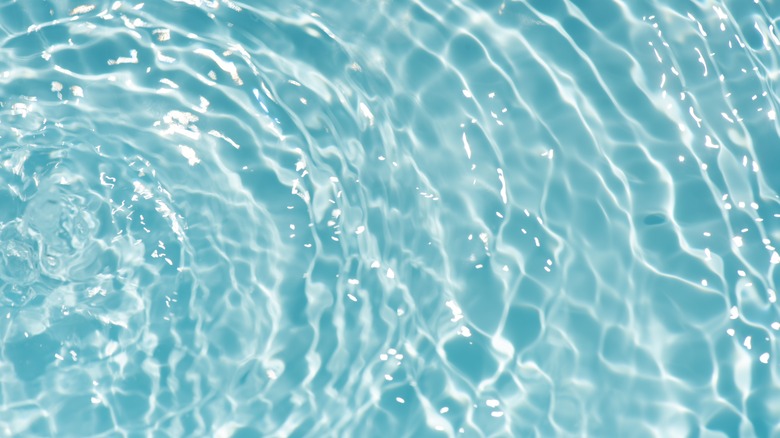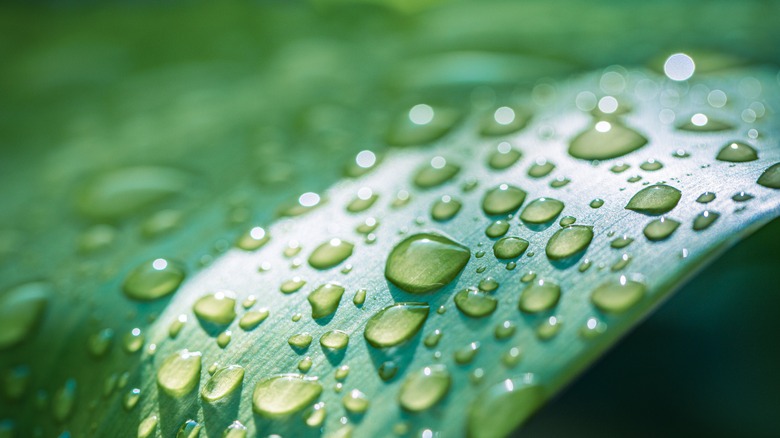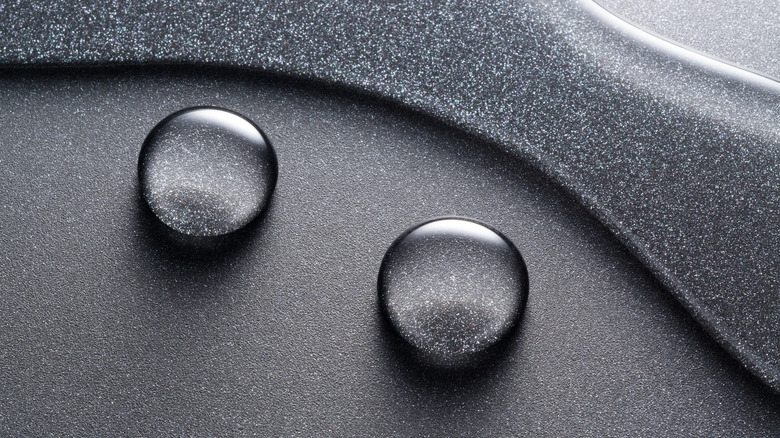Scientists Still Can't Figure Out If Water Is 'Wet'
We're all guilty of replying something like "in other news, water's wet" when someone states the obvious. However, is water truly wet, or does it just make something else wet? The answer may not be as obvious as you'd think. It all depends on whether you're taking a scientific or a more philosophical approach to the definition of wetness.
Most scientists claim that wetness is a liquid's capability to cling to solid surfaces. By doing so, water makes things (like those plastic containers in your dishwasher) wet, but it is not wet by itself. That said, wetness is also defined by the presence of moisture or liquid, which means water also must be wet. Philosophers can't agree on the issue either. Some believe that water is wet if people use the term wet to describe water. Then again, other philosophers take a more logical approach. Being wet is a condition of being covered in liquid, but liquid cannot be wet because it can't cover itself. So what's the correct answer?
The cohesive and adhesive nature of things
Understanding cohesion and adhesion is crucial to defining wetness when we're talking about laws of physics (though some scientists actually don't think they exist) and chemistry. Water has a unique behavior that's dependent on its molecular structure. It's how molecules of water interact between themselves and the surface they're touching that will determine if something gets wet or repels the water.
Cohesion is when the molecules of water attract each other and use hydrogen bonding to stick together. Each water molecule can form four hydrogen bonds with the neighboring molecules. Then, a network of hydrogen molecules is created, which allows water to hold itself together. This cohesive force of hydrogen bonds gives water a surface tension. The cohesion force keeps water together and allows it to form droplets. It's also what allows small insects to walk on the water's surface as if there's a thin film holding it together.
Adhesion, on the other hand, is water's ability to hold itself onto other surfaces. When water touches a solid surface, it's the adhesive forces that cause water molecules to spread out and wet the surface they're touching. Some materials have stronger adhesive properties than others, and it's easier to make them wet. Others have weak surface energy (low adhesion properties), which makes them repel water. For example, water adheres well to glass. It spreads easily, making it wet. But it's different with other surfaces, like teflon. Instead of spreading, water molecules are repelled by the material, and they tend to form droplets.
What makes some materials more wet than others?
The balance between cohesion and adhesion explains why water can both hold itself together and spread to make solid surfaces wet. It's also the reason why scientists still debate whether water itself is wet or not. However, the modern consensus is that wetness isn't an inherent property of water, but rather a condition that arises when water adheres to something else. Since water can't adhere to itself, it can't be wet.
That said, how much something will become wet after it makes contact with water depends on something called the "contact angle." A water droplet is seen as a liquid sphere. When this sphere touches a solid surface, it does so at a certain angle. It's this angle that determines if the water will spread out and make the surface wet, or will the surface repel the water. The contact angle determines the balance between the cohesion and adhesion forces.
A low contact angle of less than 90 degrees means water will wet the surface. A high contact angle of more than 90 degrees means the surface is hydrophobic, so it repels water. A contact angle above 150 degrees is considered superhydrophobic, as water will roll off the material's surface. Water will maintain its spherical bead shape and make very little contact with the solid surface. With the help of such properties, researchers have used nanotech to invent super-waterproof materials that make water slide off most solid surfaces.


